
In past lives, Dean Anderson has been a social worker, small business owner, college psychology and philosophy instructor, and world-class couch potato who weighed close to 400 pounds, smoked three packs and drank two six-packs of beer per day, and considered chocolate-peanut butter fudge a well-balanced meal. In this life, Dean earned a personal training certification from ACE, received training as a lifestyle and weight management consultant, and began working for SparkPeople. He writes about attitude adjustment, motivation, men's health, and senior fitness. When not sitting in front of his computer, he can usually be found hiking or biking (he's the bald guy that everyone else is passing).
Read More of 's Blogs:

All You Need Is Love...Tough Love, That Is
It’s pretty clear that progress towards any important goal goes a lot better when you can maintain a positive state of mind. Positive goals, positive (but realistic) expectations, and positive self-talk all help us stay motivated and survive the inevitable setbacks and disappointments we experience.
But there are also plenty of times when “happy talk” just doesn’t get the job done. We all do things that are just plain...well, let’s just say they aren’t very well thought out. When that happens, it doesn’t always make a lot of sense to just pat yourself on the back and say, “Don’t worry, you’ll do better next time.”
In order to learn from our mistakes and avoid repeating them, we also need to take an honest look at what went wrong, and point out to ourselves exactly how and why we are contributing to our own problems. And we need to do it in a way that will help us remember this lesson before we act the next time the problem comes up.
In my line of work, we call this Toughlove, and there’s definitely an art to it, whether you’re delivering the toughlove to yourself (OK for amateurs) or to someone else (recommended only for seasoned experts with martial arts skills and/or a good lawyer). Done poorly, toughlove can and usually does cause more problems than it solves. But done well, it can be very effective, so it’s definitely worth learning how to do it to yourself the right way.
Probably the best way to illustrate the art of toughlove is by looking at a very common problem that often responds better to a little self-administered toughlove than to happy talk…
Posted 5/22/2013 12:00:00 PM By: : 171 comments 50,258 views

Have You Found Your Inner
One of the goals of making a “lifestyle change” (as opposed to going on a diet) is to develop a healthy relationship with food and eating that feels normal, comfortable, usually enjoyable, and relatively easy to maintain over time.
No elaborate eating rules, no worries about “good” foods and “bad” foods, no guilt feelings or verbal self-abuse for breaking the rules, no getting obsessed with weigh-ins or calorie counting, no restricting your social life so you can avoid people/situations that might make you blow your diet. Just a little common sense, some basic nutritional knowledge, and a willingness to trust your body to make up for your occasional dietary “mistakes” and balance out your calorie and nutrient intake over time to match your needs.
Posted 4/12/2013 12:00:00 PM By: : 440 comments 132,320 views
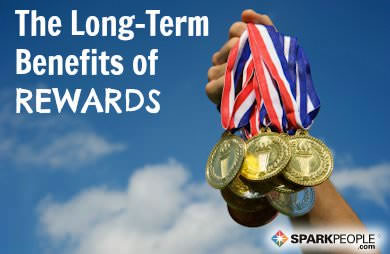
How to Use Rewards to Get the Results You Want
Changing long-standing habits can be a pretty slow and difficult process. For most of us, at least, it’s not like we just decide one day to ditch all the junk food and super-sized portions, fall in love with steamed vegetables, and suddenly become an exercise maven after years of being a couch potato. Even the most sincere New Year’s resolutions don’t magically turn into lasting weight loss and a healthy lifestyle without some real effort to let go of old habits and practice new ones to take their place.
The good news is that there are lots of things you can do to make these changes easier on yourself. One of the most important is to learn how to use rewards to keep yourself moving in the right direction. But there’s an art and a science to this business of using rewards effectively—you need to reward yourself for the right thing at the right time. The more you know about this, the easier it will be to pick good rewards and avoid some common mistakes.
Posted 4/4/2013 9:00:00 AM By: : 141 comments 86,094 views

Does the Prejudice against Obesity Motivate You to Lose Weight?
It’s no secret that being obese can make you the target of some very negative and stigmatizing attitudes. Many people have been subjected to public ridicule and cruel remarks, lost jobs or promotions, and even been blamed for large-scale social problems like climate change and rising health care costs—all because of their weight.
As reported in this article, even doctors and health policy professionals get in on the act. Ms. Brown reports that, in one study, more than half of the 620 doctors questioned said they viewed obese patients as “awkward, unattractive, ugly, and unlikely to comply with treatment.” Another study shows that higher BMI scores translate into doctors having less respect for patients and spending less time with them during appointments.
With all the evidence that, in most cases, obesity is a complex condition caused by the interaction of many different genetic, biochemical, and environmental factors, you’d think that medical professionals, especially, would be less likely to fall into the trap of viewing obesity as some sort of character flaw and stigmatizing obese patients.
Ms. Brown raises the possibility that many health professionals and policy makers believe that being stigmatized can motivate people to lose weight and improve their health. But, as she notes, the question is whether this approach actually works.
Posted 3/20/2013 12:00:00 PM By: : 390 comments 74,595 views
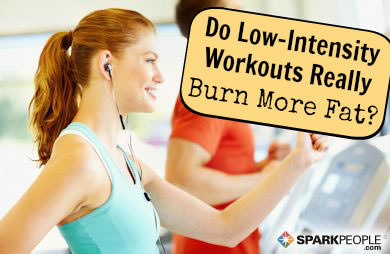
The Truth about the 'Fat-Burning Zone' and Weight Loss
The information on cardio machines can be deceiving. The "fat burning zone" is a myth that is based on a fact, but taken out of context.
It's true that higher intensity exercise uses more glucose and glycogen (the form of energy your body gets from foods) in proportion to fat, but remember that "high intensity" in this context means exercise that you can only maintain for a couple of minutes before becoming exhausted (i.e. anaerobic exercise). It’s also true that low intensity exercise uses more fat as fuel; moderate intensity exercise that you can maintain for 20 minutes or more is aerobic exercise, and will burn both fat and glucose.
You're better off exercising in the aerobic zone as much as you can because exercising at higher intensities burns more total calories. The "fat burning zone" business is very misleading. You will burn a larger percentage of fat in relation to glucose when you are working at a lower intensity, but you will also burn fewer total calories and less total fat.
Bottom line: The relative percentage of fat burned has nothing to do with weight loss—it's the total amount calories burned that counts. So just ignore the machine and continue to exercise aerobically. As a bonus, aerobic exercise also strengthens your heart and cardiovascular system, lowers blood pressure, and improves cholesterol levels.
Posted 11/8/2012 12:00:00 AM By: : 67 comments 77,002 views
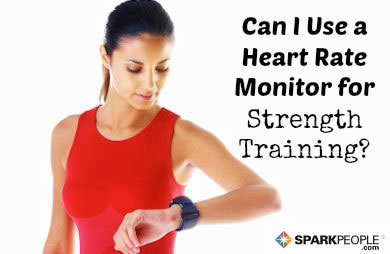
'Can I Measure Calories Burned during Strength Training with a Heart Rate Monitor?'
A heart rate monitor (HRM) is capable of estimating calorie burn pretty accurately—but only for aerobic (cardio) exercise, not for strength training. Here's why:
A HRM won't give you an accurate idea of how many calories you burn during strength training because the relationship between heart rate and calorie expenditure is not the same during strength training as during cardio exercise, which is what the HRM's estimate is based on. Unless your weight training is very vigorous circuit training, the heart rate monitor will be overestimating your calorie burn by a fair amount.
The problem is a technical one. Calorie burning isn't determined by heart rate; it's determined by the number of muscle cells that are activated to perform a given activity. It's the working cells that actually use the energy (calories) and consume oxygen. When working muscle cells need more energy and oxygen, your heart rate goes up to deliver these things to the cells via the blood stream.
Any muscle that performs a high intensity or maximum effort (strength training) will trigger an increase in heart rate and blood flow. But if only a single muscle group is on the receiving end to utilize that extra oxygen (doing a strength exercise that isolates your biceps, for example), only a relatively small amount of oxygen (and calories) will actually be consumed.
So while a series of strength training exercises may elevate your heart rate like aerobic exercise does, you're not actually using as much oxygen and burning as many calories as you would be if you were steadily using several large muscles all at once, as when walking, running, swimming, or doing aerobics for example.
The heart rate monitor doesn’t know whether your increase in heart rate is due to several large muscle groups working (cardio), an isolated muscle group lifting a weight (strength training), or even if adrenaline or excitement is increasing your heart rate. It just knows your heart rate, and the formulas it uses to estimate calories are based on studies of aerobic exercise, not other activities. So, it's going to overestimate your calorie expenditure when the rise in heart rate is stimulated by using isolated muscles at maximum intensity, which is what occurs during strength training.
Posted 7/11/2012 12:00:00 AM By: : 31 comments 96,342 views
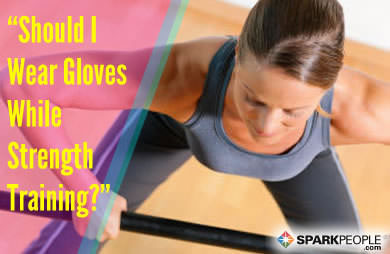
You Asked: ''Should I Wear Gloves While Strength Training?''
Many people do fine without gloves, especially for body weight or machine exercises, but if you work out regularly with iron barbells and dumbbells or train with heavier weights, gloves can help you avoid several potential problems. Any kind of padded weight-lifting glove can eliminate blisters and calluses, improve your grip, and provide some protection for the nerves that pass through your hands.
Posted 6/21/2012 6:00:00 AM By: : 53 comments 36,470 views

Is It Possible to Build Muscle and Lose Weight at the Same Time?
Your metabolism has two basic modes:
- Anabolic, which means building up or adding, and
- Catabolic, which means breaking down or eliminating.
Posted 5/26/2012 6:00:00 AM By: : 52 comments 159,808 views

Why Did I Gain Weight After Starting an Exercise Plan?
It's true that many people either gain a little weight or don't see any change on the scale for as long as 4-6 weeks after making a significant change in their level of exercise. This is often explained as "gaining muscle while losing fat" but that isn't quite accurate. This extra weight is usually water.
Posted 5/21/2012 6:00:00 AM By: : 38 comments 114,911 views
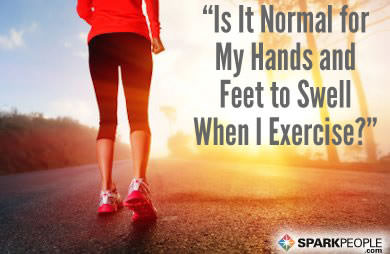
You Asked: ''Why Do My Hands and Feet Swell When I Exercise?''
It is normal for your feet to swell a little bit during exercise--enough to make a difference of about one shoe size, but some people may experience even more swelling than that. Others also experience noticeable hand swelling while running or walking. When this swelling is "normal" (not the result of a medical condition), it will usually disappear fairly soon after the exercise stops, and won't involve other symptoms.
Posted 5/11/2012 6:00:00 AM By: : 28 comments 103,111 views

You Asked: ''Why Do My Feet and Toes Go Numb While Using the Elliptical Machine?''
Many people experience numbness or "pins and needles" in their feet (often in just one foot) when using an elliptical machine. For some, this sensation is a minor problem that only happens near the end of a long workout, but others may begin to experience it within the first few minutes of exercising.
If you only have this problem during your elliptical workout, it’s probably not a sign of a serious medical problem. It is most likely caused by your foot coming in constant contact with the foot pedal, which places pressure on the nerves in your feet for an extended period of time. This is different from the natural motion of walking or running, where your foot shifts the pressure from the front to the back of the foot with each stride.
There are several things you can do that may help minimize the problem:
1. Make sure you’re wearing well-cushioned shoes for your workout, and try tying them a little more loosely than you would for running or walking.
2. Avoid standing flat-footed on the elliptical foot pedals—try to duplicate the natural shift of weight from your heel to your toe during each stride. You could also look for an elliptical machine with "articulating" foot pedals that rotate around a central pivot (like the pedal on a bicycle), instead of pedals that remain fixed in the same position as they glide.
3. During your elliptical workout, change your pedaling direction from forward to backwards every few minutes, and/or vary the incline level if your machine has that feature.
4. Avoid long elliptical workouts. Try shorter, higher-intensity sessions, split your workout between the elliptical and another cardio exercise, or divide your workout into two sessions with a break in between.
If you frequently experience foot numbness at other times, you should discuss the problem with your doctor. It could be caused by a nerve disorder (e.g., Morton’s neuroma or diabetic neuropathy), circulation problems, or orthopedic problems that need treatment.
Posted 5/11/2012 12:00:00 AM By: : 50 comments 271,303 views
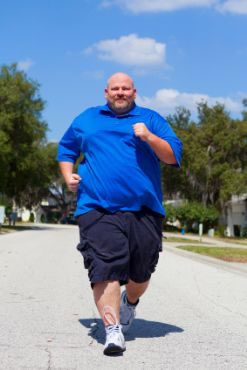
What Got You Started on the Road to Healthier Living--and What Keeps You There?
We’re heading into that time of year when many people start thinking about making some healthy changes in their lifestyle for the coming year, and the blogosphere is full of interesting and inspiring success stories that help us see what’s possible. Here’s a good example, about a man named Adam Slack who managed to lose more than 375 pounds and dramatically transform his life. His journey began after an emergency room doctor took one look at him at 585 pounds and offered to help him prepare his obituary.
This dose of pretty extreme and unorthodox “toughlove,” coming from a medical professional, apparently was just what Slack needed to get himself started. But it could just as easily have had the opposite effect, leaving him feeling shamed, threatened, or simply overwhelmed by the magnitude of his problem. Any of those reactions would probably make it harder, not easier, for him to actually accept and utilize whatever information, advice and support the doctor and other potential helpers had to offer. And as Adam himself said, this wasn’t the first time a doctor had made it clear that his weight and lifestyle was causing major problems. But this time, somehow, the doctor’s very blunt message clicked, and Slack was on his way to incredible changes.
Which raises a very interesting question:
Posted 11/30/2011 10:00:00 AM By: : 73 comments 26,165 views

If Just Saying NO Isn't Working, Trying Saying OM Instead.
Do you have trouble just saying NO to your sweet tooth, or your Inner Couch Potato when s/he really wants to skip that exercise session you've got planned? Well, maybe NO isn't really the word you should be using.
Trying saying OM instead.
That's the advice of some psychologists who have been studying the potential benefits of meditation for people who are trying to lose weight.
A couple years ago, Jean Kristeller, PhD, a psychology professor at Indiana State University, and Ruth Quillian-Wolever, PhD, clinic director and clinical health psychologist of the Duke Center for Integrative Medicine, conducted a randomized clinical trial using mindfulness meditation as an intervention for weight gain and obesity, particularly for binge-eating problems, and found that the approach was helpful. That research is described in this book chapter (link goes to a downloadable PDF).
More recently, this study found evidence of actual physical changes in the brain associated with meditation, which may help explain how it helps.
Posted 2/10/2011 5:56:25 AM By: : 62 comments 36,598 views

Does a Big Breakfast Help or Hurt Weight Loss?
One of the bits of advice most frequently offered to dieters is to eat a good breakfast. The theory goes that a substantial breakfast will “jump start” your metabolism and also help control appetite, making it easier to avoid overeating later in the day.
But does it really work that way?
Apparently not, according to the study reported in this article. Researchers studied the eating habits of both overweight and normal weight subjects and found that, in both groups, the size of their breakfast had no effect at all on how many calories they ate at other meals. But a large breakfast was associated with eating more total calories during the day.
Posted 2/2/2011 5:32:58 AM By: : 210 comments 45,309 views
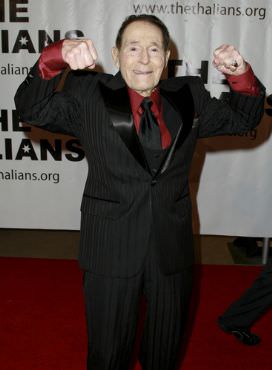
In Memoriam: Jack LaLanne
Jack LaLanne, founding father of the fitness movement in the United States, died at home on Sunday at the age of 96.
Those of us who were around during the early days of television may remember him best for his syndicated exercise show, which first appeared in 1951 and stayed on the air for 33 years. I don’t remember exactly when I started watching the show, but I do remember being impressed by the two white German shepherds who often shared the stage with Jack.
When I was somewhat older, I also remember being struck with how honest, simple, and direct his message was. He didn’t try to sell you any dubious gadgets, techniques, or diet plans, even though he certainly had the opportunity and the means to do so. He preached a simple diet of natural, whole foods, along with basic strength training and regular physical activity—as he put it on most of his shows: "Exercise is king; nutrition is queen. Put 'em together and you've got a kingdom!"
The other key ingredient in LaLanne’s approach was constantly challenging yourself to do the best you can. And when it came to setting and achieving personal challenges, he truly led by example...
Posted 1/26/2011 3:00:00 PM By: : 150 comments 33,574 views
Read More Entries ›
.jpg)


.jpg)
